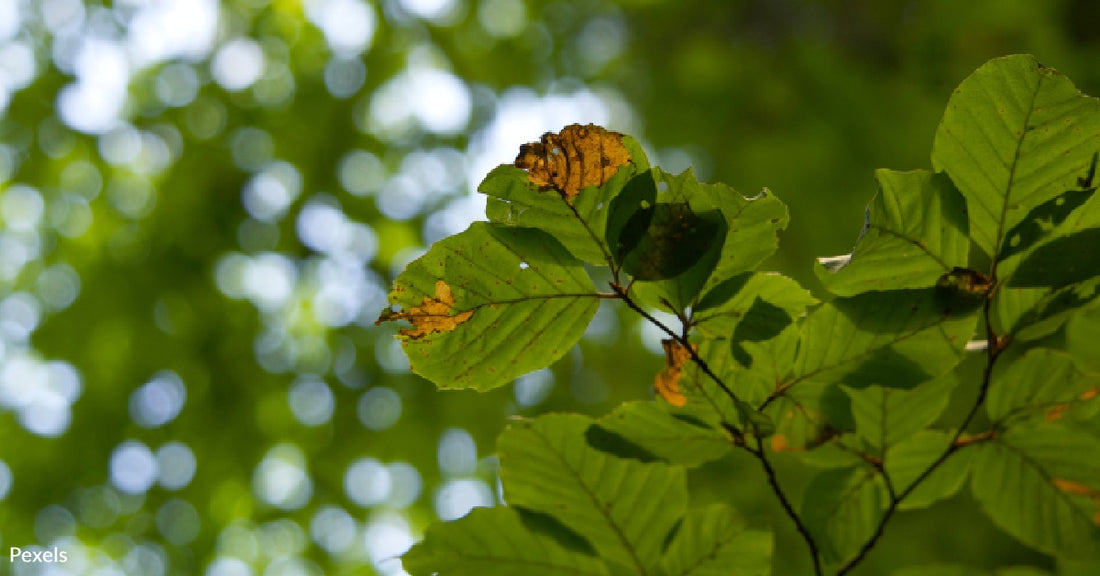Racing Against Time: The Menace of Beech Leaf Disease Threatening Our Forests
Matthew Russell
The majestic beech trees that grace the landscapes of Connecticut's state parks have long provided a lush and welcoming canopy, offering shade and beauty to all who visit. However, a silent and insidious threat is spreading through these groves, leaving thousands of beech trees stripped of their leaves and branches.
Beech tree disease, caused by microscopic worms that infest the leaves, has taken hold, endangering not only Connecticut's beech trees but potentially every beech tree in the country.
 Photo: Pexels
Photo: PexelsBeech trees are iconic deciduous trees found across the United States.
Unprecedented Devastation: A Race Against Time
Arborists and scientists are grappling with the alarming and rapid spread of beech leaf disease.
Dan Poole, a licensed arborist with K&J Tree Service, has been at the forefront of combating this crisis. "I have not seen a beech tree uninfected," Poole told WTNH.
These microscopic worms, which settle into the beech leaves in their thousands, cause irreversible damage. Experts now predict a 100% mortality rate for the 57 million beech trees in Connecticut, as well as those across the Northeast and North America, the New Haven Register reports.
 Photo: Pexels
Photo: PexelsBeech leaves are simple, oval-shaped, and toothed along the edges.
As the disease progresses, the beech trees undergo a steady decline. The leaves, vital for the tree's photosynthesis and overall health, become unable to perform their essential functions.
"The bigger a tree gets, the more leaves it needs. So, with no photosynthesis taking place on these leaves, the demise of this species is inevitable," Poole told WTNH.
This stark reality leaves little room for hope, as experts grapple with the challenge of finding a cure amidst the race against time.
 Photo: Pexels
Photo: PexelsAs important carbon sinks, beech trees contribute to reducing greenhouse gas levels.
A Grim Outlook for the Future
One of the most perplexing aspects of the disease is the speed at which it spreads. Arborists initially speculated that it might be transmitted by chipmunks, squirrels, or birds, reports the USDA Forest Service but the true mechanism remains a mystery.
This perplexing nature of the disease adds to the urgency of the situation.
 Photo: Pexels
Photo: PexelsBeech trees are often associated with oak and maple trees in mixed forests.
Despite the efforts to find a cure, the sad truth is that it may already be too late.
"Something has to get sucked into the vascular system of these trees to get into the leaves," Poole told WTNH. "The problem is, by the time scientists come up with a cure and it’s approved by the FDA, all the trees are going to be dead."
The lack of time poses a significant obstacle to intervention, leaving arborists and scientists grappling with a crisis that defies easy solutions.
 Photo: Pexels
Photo: PexelsThese trees thrive in temperate climates and prefer well-drained, slightly acidic soils.
Taking Action for Beech Trees
This situation necessitates action, even if the hope for a complete solution remains dim. If you have beech trees in your yard, it's crucial to understand the risks and potential safety concerns. Beech trees in varying states of decline are prone to losing leaves and branches, posing a threat during strong wind gusts, reports the Forest Service.
To determine if you have beech trees in your yard, look for their distinctive smooth trunks. If you have concerns about their condition or potential safety risks, it's advisable to seek the guidance of a licensed arborist. These professionals can provide expert insights and help you make informed decisions about the best course of action.
 Photo: Pexels
Photo: PexelsBeeches are valued for their smooth, gray bark and vibrant fall foliage.
Facing an Unpredictable Future
The story of Connecticut's beech trees serves as a sobering reminder of the fragility of our natural world. The urgency of the situation, where an entire species is at risk of extinction due to a microscopic infestation, underscores the need for responsible environmental stewardship.
As we grapple with the implications of this disease, let it serve as a call to action. Each of us has a part to play in safeguarding our environment, whether it's through responsible tree care, supporting scientific research, or advocating for policies that protect our natural resources. The plight of the beech trees is a stark reminder that our actions have consequences, and that our commitment to the health of our planet is more important than ever.
In the face of these challenges, we must rally together to ensure that our environment thrives, even in the face of adversity. The legacy of the beech trees serves as a testament to the delicate balance of our ecosystems and the need for unwavering dedication to their preservation.
Click below to make a difference.

